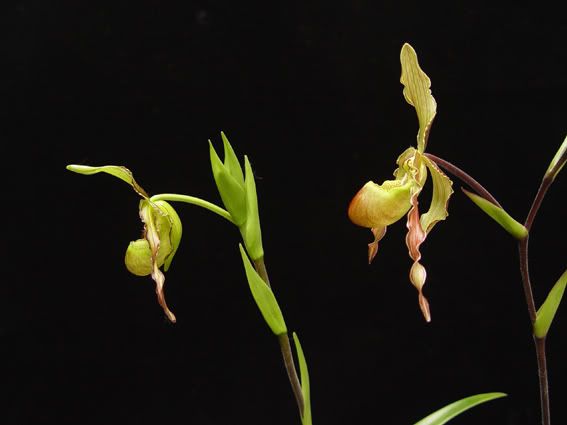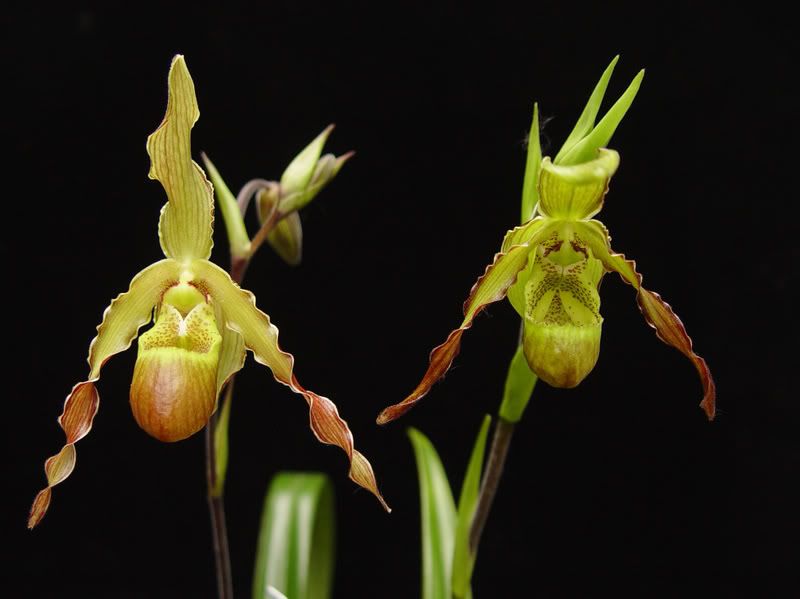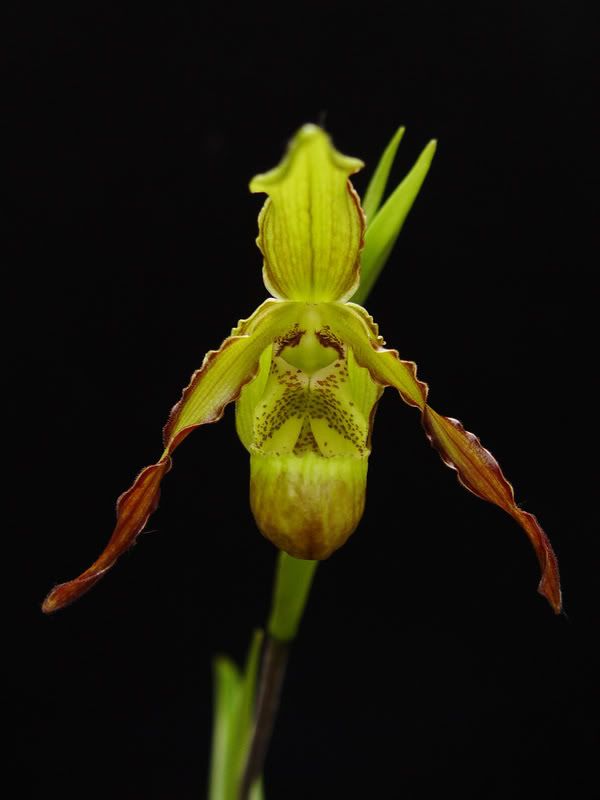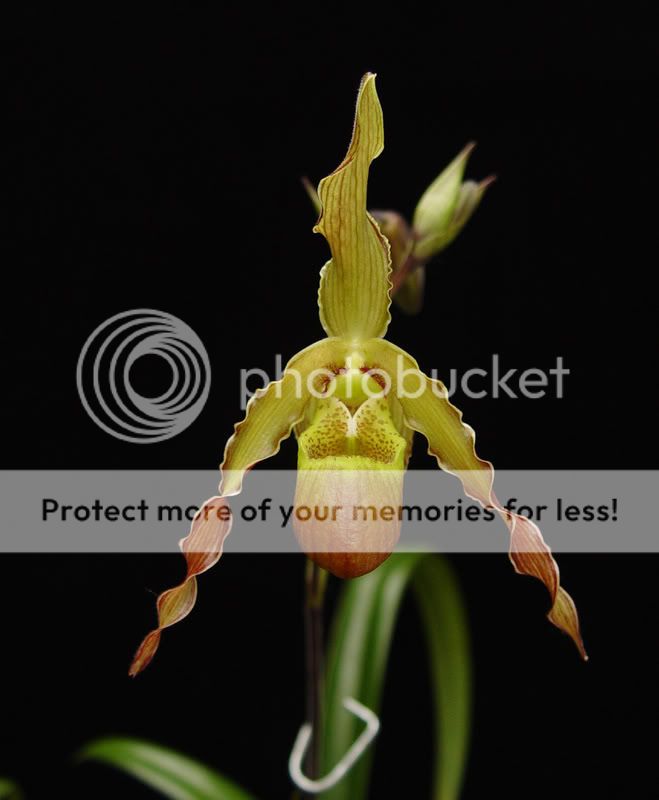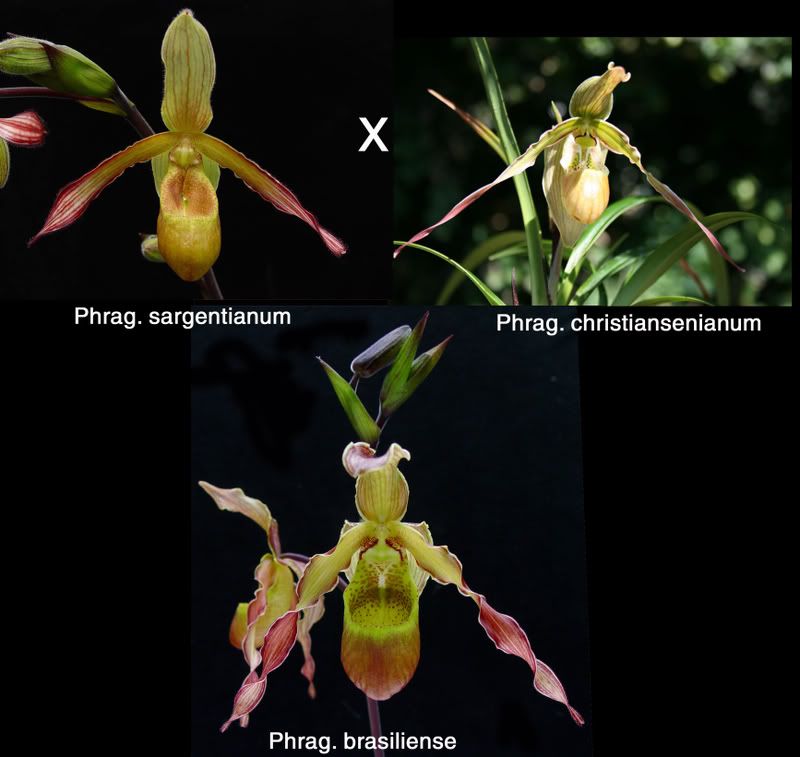there seems to be an almost consensus that brasiliense is a hybrid of lindleyanum with something from the lorifolium section.
I do agree with Olaf that there is essentially no new information out and everything going on here is speculation. So, let's speculate

Regarding brasiliense being Patty McHale: wouldn't pearcei heavily influence plant size and isn't Patty a much smaller plant than brasiliense? I'm just thinking of Phrag. Olaf Gruss, which is a pretty compact plant.
The unsimilarity of Phrag. Hochgern and brasiliense, which I can't state of because I haven't seen any photos of Hochgern or Mem. Adele Bishop yet: the original cross was lindleyanum x vittatum; how would the reverse cross vittatum x lindleyanum come out? Possibly more towards the pollen parent (read: more like brasiliense)? What exactly are the differences between Hochgern and brasiliense?
Robs Phragweb page has some nice pics of Phrag. Yu-Fu Liu and the unregistered sargentianum x caricinum. To me they look pretty similar to brasiliense, and caricinum would be a likely parent as much as richteri and more than pearcei. I don't know wether Dungs and Pabst recording of caricinum from Brazil was an error or if this species has been found in Brazil. Brazilians on this forum might know better.
Another candidate parent would be christiansenianum. Funny enough, this species has been in cultivation for decades and only recently been rediscovered in western Brazil. Hope there is an analogy to brasiliense.
On the other hand, brasiliense has a pretty large synsepal, and that would in my eyes lead to vittatum as one parent, wouldn't it?
I'm currently leaning towards a hybrid origin of brasiliense, but all options are still out. Looking forward to those F2 seedlings, they may tell us more.
Cheers, Carsten






